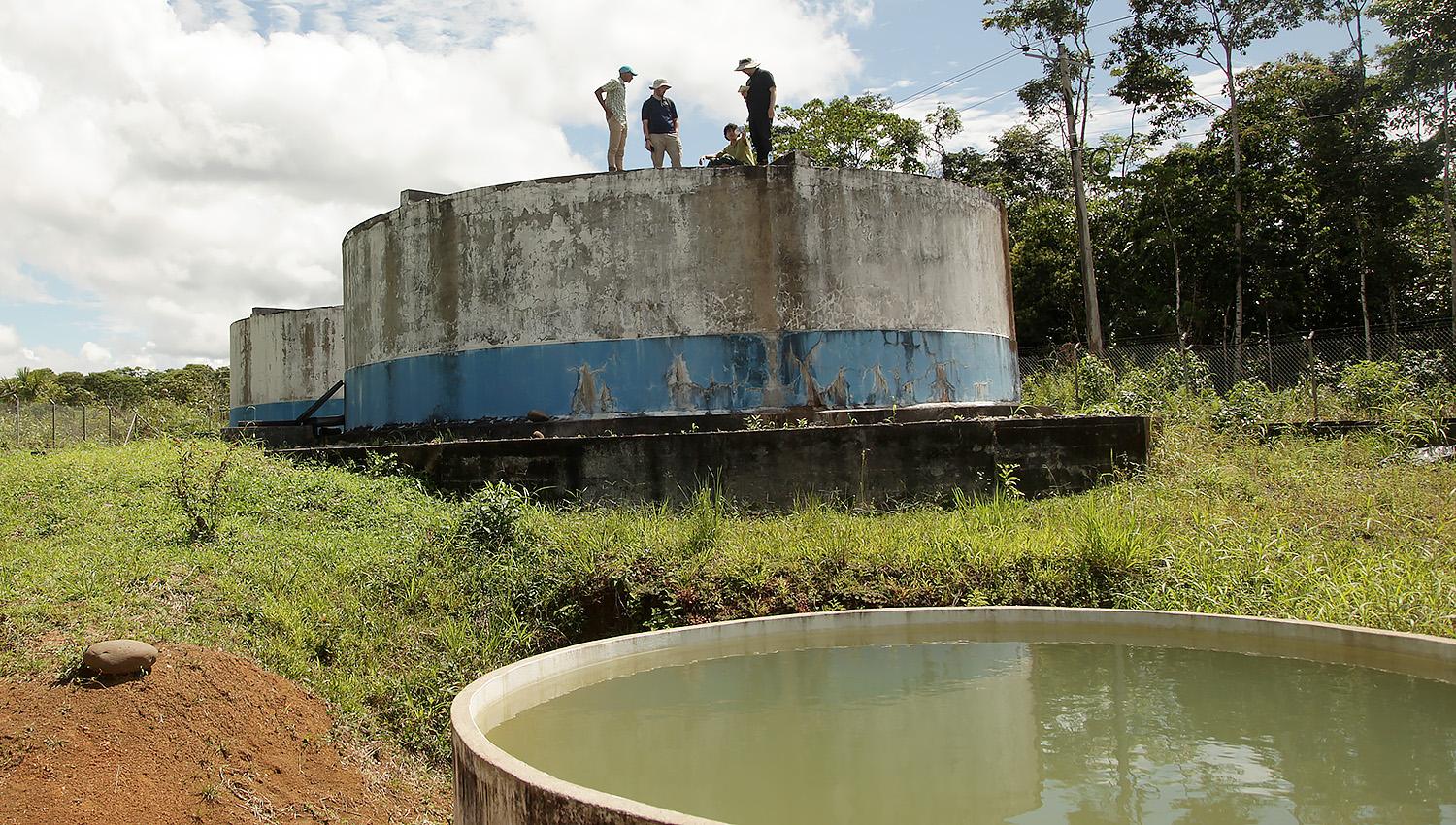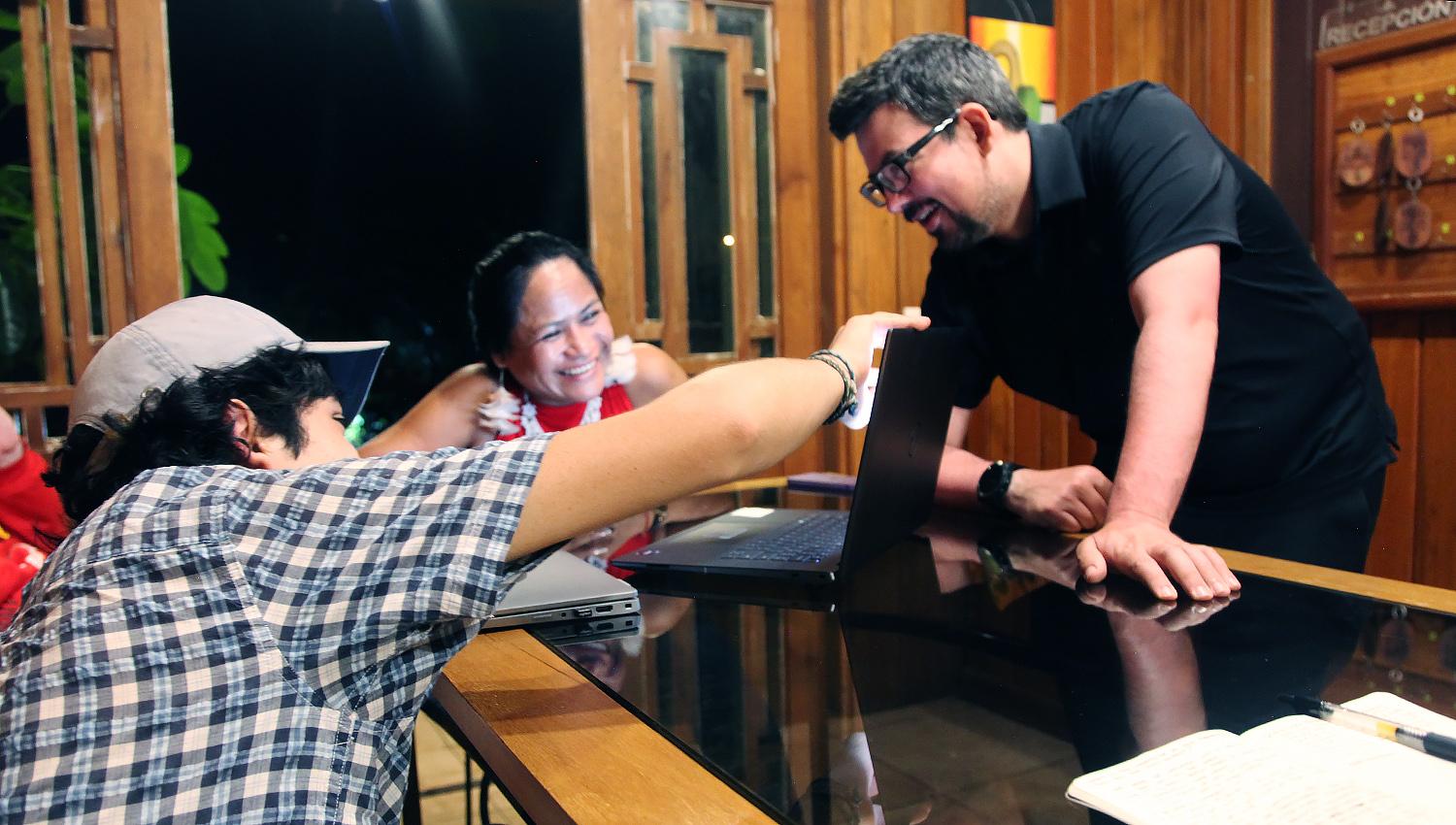Canada Newsletter, July
Watching God at work is a powerful experience.
EMI Canada’s International Projects Coordinator and Project Leader Ryan Williams can attest to this firsthand. After joining EMI in April, he didn’t have to wait long to see God at work when the EMI Nicaragua and EMI Global offices reached out to ask if Ryan could take over leadership of an upcoming project to Ecuador…with three weeks’ notice.
After prayerful consideration by the EMI Canada team, Ryan assumed leadership of the project. “God was working in that process and as the trip logistics came together, it was a clear sign that He was in this and making it happen,” he said.
Ryan began working with the partner organization, Fundación Pachamama, an Ecuadorian non-profit primarily focused on conservation of the Amazon rainforest, with an additional focus on a health program called Ikiama Nukuri, that works to provide solutions to the high maternal and infant mortality rates in the remote Achuar and Shuar territories in the rainforest.
Fundación Pachamama needed EMI to design a prototype birthing house for the Ikiama Nukuri program, which could also support educational activities. The EMI team vetted three potential sites for the facility, ensuring that fresh water, sewer, and electrical hookups would be available.
The EMI project team included project leader Ryan Williams (civil engineer), project co-leader Graham Frank (civil engineer) who is Vice President of Marketing at EMI Global, and volunteers Morgan Bell (civil engineer) from Alabama, U.S., and Zane Erickson (architect) from Abbotsford, B.C. Complementing the team remotely were volunteers Ian Ebersole (structural engineer), Robert Bell (structural engineer), and Gregory Sturm (electrical engineer).
The team arrived in Quito, Ecuador on June 13 and were met by Fundación Pachamama’s birthing house project manager Bernardo Guarderas, who also doubled as the project team’s interpreter. The team then travelled to Taisha, a town located on the edge of the Amazon rainforest.
Work began with the team familiarizing themselves with Taisha, walking through town for their first look at the three potential building sites.
“Our team went to work gathering information about the three sites; their water supply system, municipal service connections, access points to the sanitary sewer system and their connection to the electrical grid,” said Ryan.

Over the course of their stay in Taisha, the team developed a ritual of stopping daily at a local bakery for pastries. It turned out that the bakery owner was a member of the local church. When the team attended church on Sunday, they were met by the bakery owner.
“Her face beamed with joy as she greeted us,” said Ryan.
These interactions with the church and Christians in Taisha encouraged both the team and the local church. The project team was inspired to see how God and His church was already active in Taisha, while the local believers were encouraged to have foreign believers come to support their remote community.
“Sometimes it’s the simple acts that make a big difference,” said Ryan.
The team was thankful for an excellent working relationship with the Taisha municipal government, known as the GAD, who provided access to the city’s technical drawing archives and tours of local water treatment facilities. This access assisted the team in determining the most suitable site for the birthing house.
Alongside addressing the needs for the birthing house, the team conducted a WASH (water, sanitation and hygiene) assessment of water distribution and quality in Taisha, presenting the results, along with recommendations, to Fundación Pachamama and the GAD.
An important moment came when Taisha’s water program manager, a man named Stalin, explained that a key challenge was that a main water source, a spring, would seasonally run dry. When a councilor commented that they were considering drilling wells for a more reliable year-round water supply, volunteer Morgan Bell affirmed this approach, citing it as a successful solution for smaller towns across the U.S.
“Their eyes lit up when Morgan said that, giving credence and support to their ideas,” said Ryan, “I thought that was a very powerful moment.”
The unmistakable impact of a simple affirmation is an example of what make these project trips, opportunities for personal connection, vital to EMI’s mission to design a world of hope.

As the in-country team gathered technical information and passed it along to remote volunteer Greg Sturm (electrical engineer), he added his recommendations both to the site choice as well as the important issue of back-up power generation. The nationwide blackout that occurred during the team’s visit reinforced the critical need for back-up power.
After sorting through their preliminary findings, the EMI team selected a site to recommend; a parcel of private land located in the middle of Taisha.
“With this property you have immediate access to water supply, the sanitary sewer system, and power from a pole located adjacent to the property,” said Ryan.
As the team worked on selecting the location for the birthing house, volunteer Zane Erickson (architect) reviewed and revised a conceptual design that had been created for it, merging the traditional building practices of the Achuar and Shuar with modern ones.
Respecting local materials and construction methods was important to Fundación Pachamama, so Zane’s design integrated traditional materials, such as bamboo and thatch, alongside more modern materials, such as concrete with rebar, to create the combination medical and educational facility. The result was a facility where the Achuar and Shuar’s expectant mothers can give birth and, alongside members of the community, learn about health and best practices for mothers and babies.
“He incorporated those features into the building design which is really cool,” said Ryan.
As the formal work portion of the trip was ending, the EMI team made a visit to the Achuar and Shuar village of Wampuik, a rainforest community of about 1000 people only accessible by plane. As the team toured the village, they performed an informal assessment of and provided recommendations for improving the water system.
On their return to Taisha, the team presented the project’s preliminary findings to Fundación Pachamama and the GAD, before saying their goodbyes and heading home.
Reflecting on the trip, one can’t help but see God at work in everything from the technical solutions the team found to the spiritual growth experienced by the team and community.
Unique for EMI Canada partner agencies, Fundación Pachamama is not a Christian organization, but God was still at work there.
“Bernardo was with us every day,” said Ryan, “he participated in our daily devotionals and prayers, he got to see firsthand Christians in action.”
Ryan believes that the foundation has been laid for future EMI projects as well as other missions involving the birthing house, including potential medical missions.
While the trip is done, the work certainly isn’t. The team now will be put together their final report, synthesizing all the data they collected in-country, to be given to the GAD, the Ecuador Ministry of Health, and Fundación Pachamama, empowering them to move forward with the construction of the birthing house.

